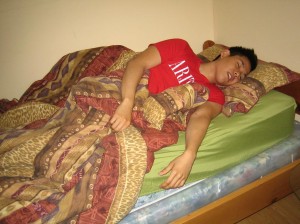Ankylosing spondylitis is considered as type of chronic, progressive arthritis that involves the spine, sacroiliac joints as well as other joints in the body.
What are the symptoms?
It is important to note that ankylosing spondylitis typically occurs among individuals between the ages of 15-30 years old. The condition is quite common in men than women. Take note that fewer women are accurately diagnosed due to the varying patterns of symptoms than men.

The symptoms of ankylosing spondylitis might be limited to the lower back or joint aching which is often considered as growing pain among young individuals. The symptoms can come and go and usually progress to include the following:
- Pain and stiffness in the morning which affects the sacroiliac joint area and spine.
- Aching in the lower back that can disrupt sleep
- Pain is worse during and after rest especially in the morning
- Pain that radiates down the legs and into the groin
- Exercises helps ease the stiffness and pain
- Pain in the neck, buttocks, shoulders, hips and upper back
- In severe cases, it includes feeling of illness, fatigue and even weight loss
Other complications include recurring eye inflammations as well as lung, heart, nervous system and bowel issues over time and even increased kyphosis.
Close look on ankylosing spondylitis
Ankylosing spondylitis is considered as type of chronic, progressive arthritis that involves the sacroiliac joint and spine as well as other joints. The exact cause is currently still unidentified but a hereditary factor is usually considered.
The inflammation within the sacroiliac joints and the spine develops which also triggers the development of bony growths that leads to the fusion of the vertebrae resulting to stiffness and pain.
Not all cases of ankylosing spondylitis are exactly the same. There are variations that occur in the distribution of pain, inflammation, stiffness and the duration of the flare-ups and the course of the disease. In some cases, the disease becomes less active and pain can cease altogether. To learn to recognize and manage the symptoms, sign up for first aid training today.
Treatment
- The individual should maintain a fit and healthy body
- Always stick with a good diet
- Maintain optimum weight so that minimal stress is placed on the spine
- Avoid movements that are abrupt as well as twisting
- Utilize a heat pack or warm bath to minimize stiffness and pain
- Exercises such as swimming is highly recommended since it places minimal strain on the joints and spine
- Other exercises that focuses on back strength and mobility are also beneficial
When to consult a doctor
The doctor will request for an X-ray and blood test to help confirm a diagnosis. In most cases, exercises and physiotherapy can be prescribed to help maintain proper mobility and posture as well as counteracting the stiffening of the spine.
Anti-inflammatory medications such as ibuprofen can be prescribed as well as other drugs or injections. Take note that surgery is rarely performed although it can be utilized to bring back movement or straighten out the spine in severe cases.
